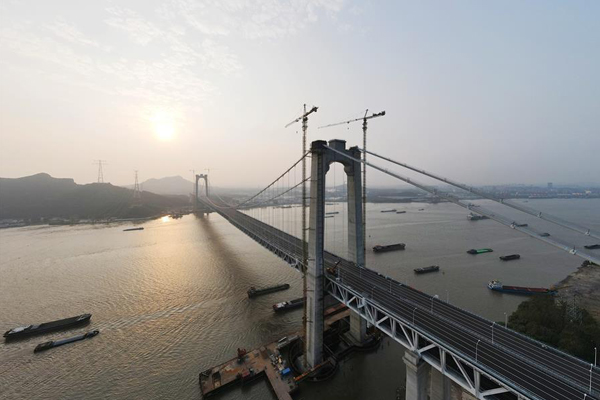On June 18, the North-South Highway of the Wufeng Mountain Yangtze River Bridge in Jiangsu Province passed an acceptance test for driverless designation, marking the completion of the country’s first “highway of the future.” It will be open to traffic in early July.

The project has a total length of about 33 kilometers. It starts from the intersection of Beijing-Shanghai high-speed and Shanghai-Shaanxi high-speed Zhengyi hub, and crosses the Yangtze River to the south via Wufeng Mountain Yangtze River Bridge, ending at the intersection of Taizhen high-speed and Jiangyi high-speed Dagang hub.
As the first new eight-lane standard expressway in Jiangsu Province, it is a convenient north-south crossing between Beijing and the Yangtze River Delta.
It uses 5G communication technology to promote the deep integration of BIM, big data, Internet of Things, cloud computing and other technologies with highway construction.
The “future highway” establishes a holographic sensing data collection and transmission system to make the road more intelligent and smart.
For example, the vehicle-road cooperation system has installed road test antennas along the road, which can exchange road information with vehicle terminals in real time, assist and control driving behavior, and support unmanned driving.
Jiangsu province is situated in the east of China on the lower reaches of the Yangtze River, bordering the Huanghai Sea and covering a coastline of over 1,000 kilometers. With a total area of over 102,600 square kilometers and a population of 74.28 million, it is the most density populated province in China. Its population consists of Han, Manchu and other nationalities and its capital is Nanjing.

